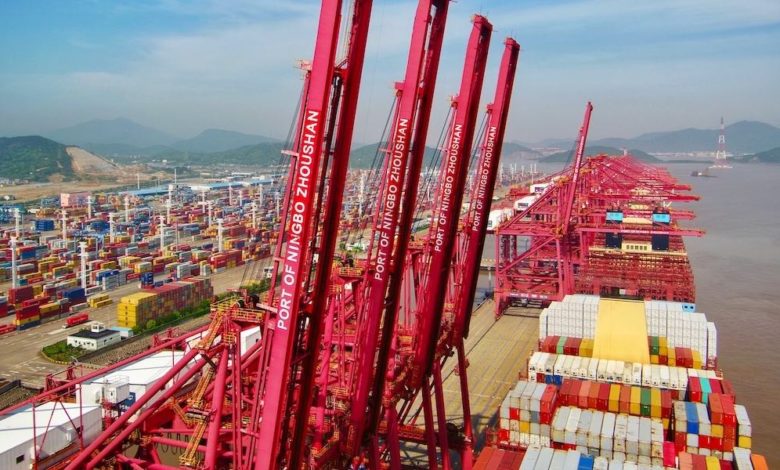Ningbo lockdown measures tightened

State media in China is insisting that volumes at the world’s largest port have not dropped, even as lockdown measures across the city of Ningbo increase.
An outbreak of Covid-19 at a clothing factory in the city’s Beilun district over the weekend sparked local lockdowns and mass testing, and has hampered trucker availability connecting Ningbo-Zhoushan port, the world’s largest port in overall cargo volumes and third largest when it comes to handling containers.
The number of confirmed Covid cases has increased from an initial one to 23 at the latest count.
The heightened restrictions could result in production disruptions
A notice from Ningbo Customs has detailed a business emergency response mechanism with changes to some customs clearance and inspection operations in locked down Beilun district, an area of the city that houses some of the busiest container terminals.
Freight forwarder Shapiro reported that a container depot that is located in the lockdown area has suspended operations.
The port’s average daily container throughput is more than holding up thus far. From January 1 to 3 daily throughput exceeded 97,000 teu, up 8.5% year-on-year, a local port official told Global Times, a state-run newspaper.
Officials in Ningbo tightened Covid-19 restrictions in Beilun today. Authorities are implementing entry and exit controls in the affected areas.
“The heightened restrictions could result in production disruptions, including short-term delivery and order fulfillment delays, at factories in the affected areas of Beilun District. Processing delays and shipping disruptions are possible at the Ningbo Port; however, officials have issued passes for permitted truck drivers to enter closed locations and designated ‘greenways’ for container vehicles to access the port area,” an update from risk management consultants Crisis24 stated today.
Beijing’s strict zero-Covid policy has curbed local outbreaks with mass testing, snap lockdowns, vigilant surveillance and extensive quarantines. However, new variants such as omicron have seen outbreaks intensify since the autumn.
Ningbo has had three partial lockdowns in the space of six months.
Meanwhile, along the Yangtze, China’s longest river and a key artery into industrial heartlands, some 200 pilots have been put into quarantine over the past week after two pilots tested positive for the virus.
Down south, feeder operators have suspended services from late December until mid-February due to strict Covid quarantine rules for crews, threatening the ability of local seafarers to get home in time for Chinese New Year.
Freight has also become stuck in recent days at the land border crossing with Vietnam as the border is closed due to Covid-induced lockdowns in China’s Guangxi province.
In the west of the country, the city of Xi’an, which has 13m residents, has been in a strict lockdown for the past 13 days.
Lars Jensen, CEO of liner consultancy Vespucci Maritime, commenting via LinkedIn, suggested that China’s continued use of a zero-tolerance policy towards Covid-19 combined with the rise of the more contagious omicron variant means that the risks of larger disruptions to not only supply chains but also manufacturing are significant in the coming weeks.
China’s heavy quarantine rules are seeing Chinese crews – among the most numerous in the global merchant fleet – facing quarantines of up to seven weeks when they return home, while crew changes for foreign seafarers at Chinese ports have become very difficult, exacerbating the crew change crisis.
